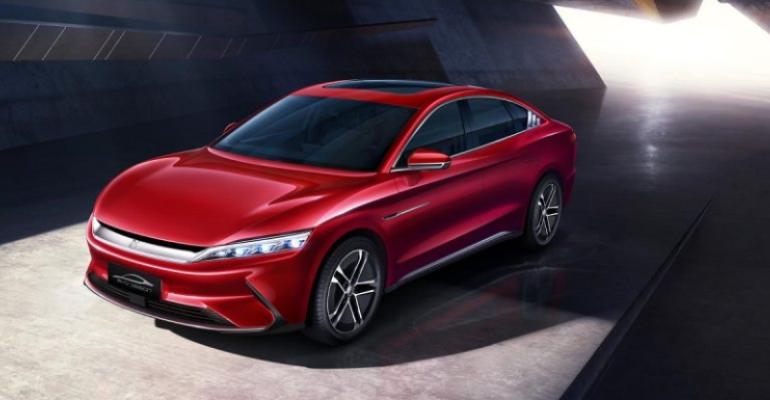As the leader goes, the runners-up follow. That’s what is happening now in the BEV segment, with said leader, Tesla of course, taking a series of whacks to its vehicle prices.
At time of writing, the BEV top dog had reduced various sticker prices a total of six times year-to-date in 2023 and we shouldn’t be surprised if it takes out the scissors again before long. “Tesla is still in a growth phase. It has lost much of its technology lead to other electric brands, such as BYD,” said Patrick Wirth, vice-president of mobility at Swiss insurer Baloise. “Also, when it comes to the classic OEMs the gap is closing. As a result of its growth strategy and the increase in competitors, Tesla is using discount politics which is something we saw over the last 20 years in the car industry prior to 2020 when the world changed because of the pandemic.”
What has to be remembered with Tesla is that the company started from very high price levels. It had the advantage of novelty, in a world far less suffused with BEVs than the one we live in now. It also managed to capture that all-important “cool factor” with its sleek, of-the-moment car and SUV models. With the encroachment of traditional automakers and design-savvy upstarts alike into the BEV segment, the novelty has worn off and competition keeps getting hotter.
Dave Opsahl, CEO of auto industry consultancy Actify, considers the current price war “as an outcome of a growing and maturing EV market. We are past the early adopter phase and now there is a limited market for cars priced around $100K or higher.” He added that: “Tesla specifically has a mission to transform transportation, and it needs to find a larger market for the increasing production output from its growing roster of gigafactories.”
All told, Tesla has currently five of gigafactories – three in the US and one apiece in Germany and China. Speaking of China, that country’s roaring BEV industry is one source of the pressure moving down vehicle prices. Among its many ambitions, the Chinese government wants to both eliminate the pollution from traditional ICE models and reduce its dependence on oil [Also, not least, because it controls 95% of the earth’s known resources for lithium-ion batteries – Ed]. It has been very aggressive in pursuing those goals, for example mandating that 40% of vehicles sold are to be BEVs by 2030. As we’ve seen with many other economic sectors, general manufacturing for one and finance for another, China’s businesses don’t want to stop at the country’s borders.
“[Chinese] carmakers are already exploring new markets such as Europe and the US,” said Wirth. “The Chinese EVs are built with extreme cost efficiency and, with their strong sales in their home market, the BYDs of the world can grow aggressively by offering lower prices to consumers.”
To butcher an old saying, a receding tide lowers all boats. Declining prices for popular and high-visibility BEVs will create expectations for other BEVs too, such as utility vehicles and other niche autos. One individual keeping a watchful eye on this dynamic is Seth Ward, chief information officer of eTukTuk, which concentrates on the electrification of the tuk-tuk – a classic and rather high-polluting vehicle often used as a taxi in Southeast Asian countries. Ward feels we’re closer to the beginning than the end of the sticker price war. “It's hard to imagine the price cuts ending anytime soon unless more extreme lithium shortages or something similarly huge occurs,” he said. We shouldn’t count on the incumbent automakers to reverse the trend, either. “While most manufacturers have more scale and experience generally, they're still mostly playing catch-up. If other manufacturers want to keep up with Tesla, then they can’t ignore the price cuts,” Ward added.
Another dynamic auguring for continued price reductions is the continued refinement and innovation of key BEV components and technologies, not to mention the art of putting them together into an attractive vehicle. Opsahl said that carmakers continually monitor and analyze feedback about their pricing models, and “the process will continue and prices will come down as EV technology improves (especially solid state), new battery capacity comes online, and production volume enables economy of scale”.
So, should car manufacturers active in the BEV space ‘keep up with the Joneses’ and continue to trim their prices? Kamyar Moinzadeh, CEO of assisted-driving solutions company Airbiquity, thinks the answer is a resounding “yes”. According to him, they should “do what they need to do to compete and gain EV market share and production volumes while making a reasonable profit for the company and shareholders.” However, he stressed that: “How successful they will be will not be based on price alone as pricing is only one component of what for most people is the second most expensive investment they will make.”





